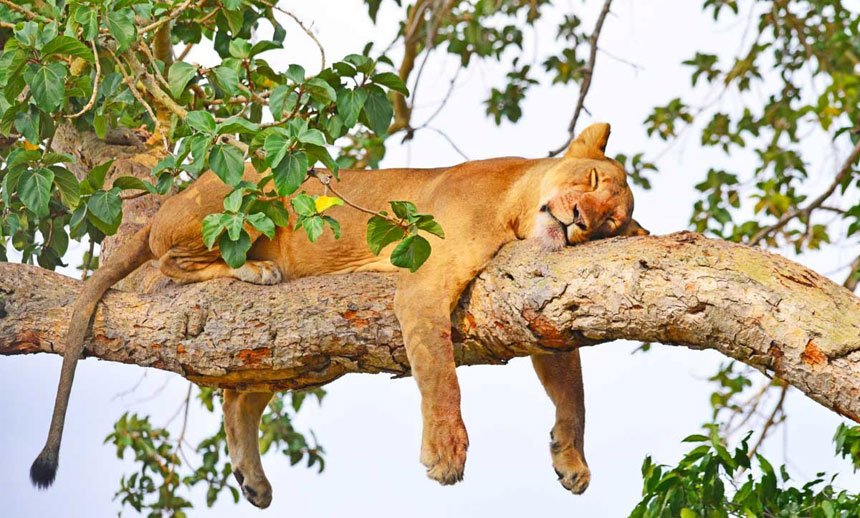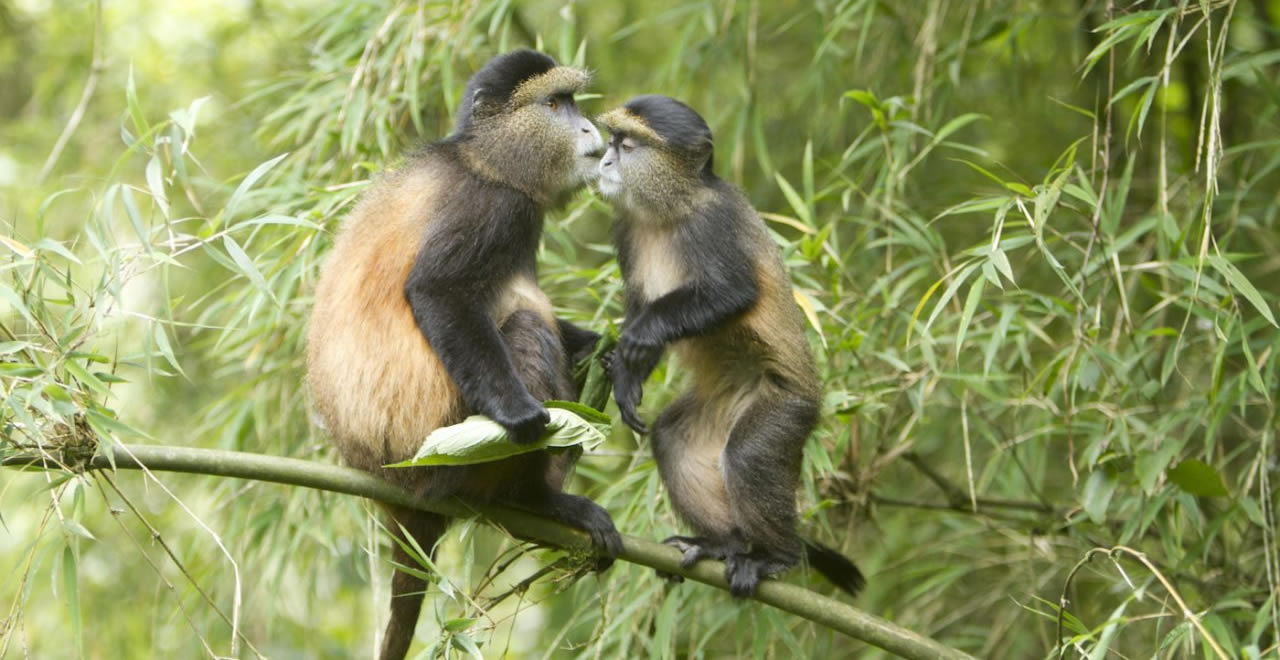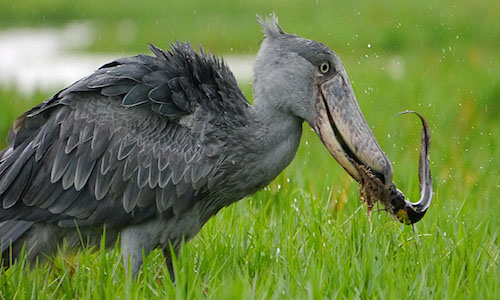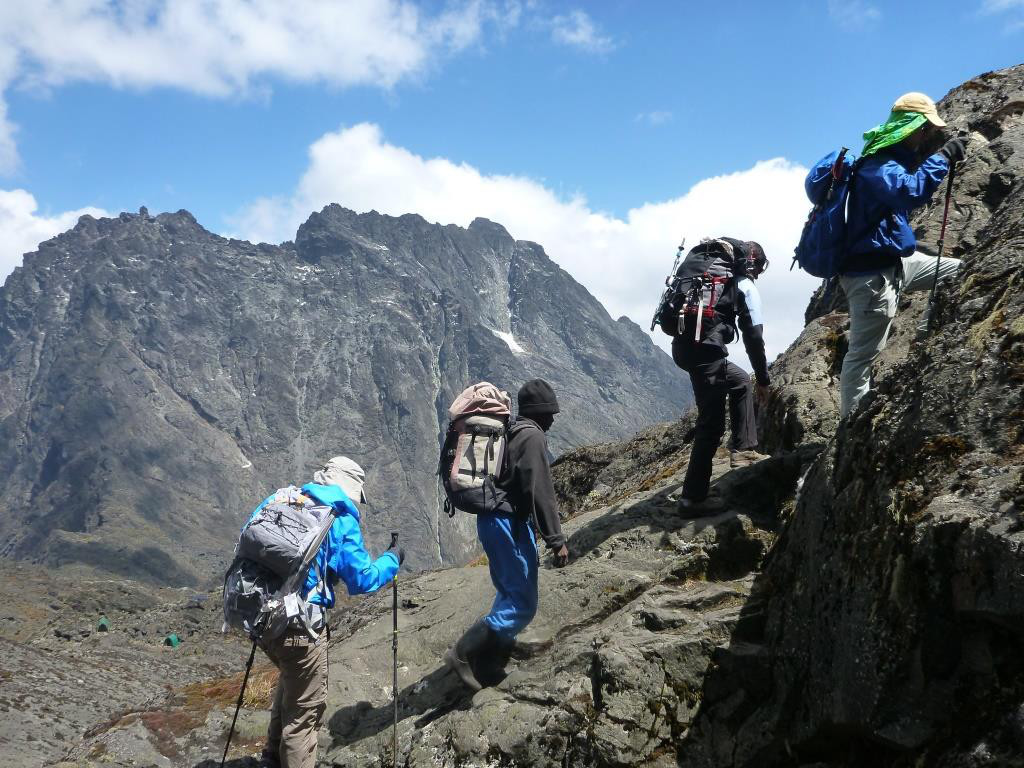Gorilla Trek Africa offers custom-made and guided Tanzania safaris to explore the top tourism destinations in this country. We take you to explore and enjoy the true African wilderness for excellent game viewing, Wildebeest migration experience, cultural tours, camping, balloon safaris, walking tours and mountain climbing tours at discounted rates. Spend time relaxing at the sandy beaches of Zanzibar Islands to enjoy fresh cold breezes and different water sport activities.
Brief facts about Tanzania
Tanzania is located in East Africa within the African Great Lakes region. It borders Uganda to the north; Kenya to the northeast; Comoros Islands and the Indian Ocean to the east; Mozambique and Malawi to the south; Zambia to the southwest; and Rwanda, Burundi, and the Democratic Republic of the Congo to the west. Mount Kilimanjaro, Africa’s highest mountain, is in northeastern Tanzania.
The country occupies an area of 945,087 sq.Km and it’s about three time the size of Italy or slightly larger than twice the size of California.
Tanzania has a population of about 63 million people (as of September 2022), capital is Dodoma and largest city, while chief port, major economic and transportation hub and de facto capital is Dar es Salaam. Spoken languages are Swahili and English (both official), Arabic (widely spoken in Zanzibar).
Many important hominid fossils have been found in Tanzania, such as the 6-million-year-old Pliocene hominid fossils. The genus Australopithecus ranged across Africa between 4 and 2 million years ago, and the oldest remains of the genus Homo are found near Olduvai Gorge. Following the rise of Homo erectus 1.8 million years ago, humanity spread all over the Old World, and later in the New World and Australia under the species Homo sapiens. H. sapiens also overtook Africa and absorbed the older species of humanity.
Popular Tanzania Safaris
9 Days Northern Tanzania Safari
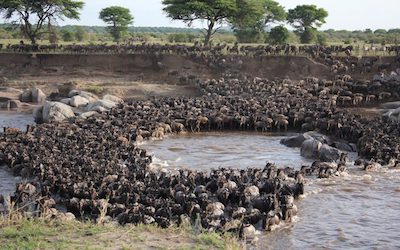
The 9-days Northern Tanzania Safari rewards you with great wilderness, adventure and cultural experiences. Read more..
6 Days Northern Tanzania Safari
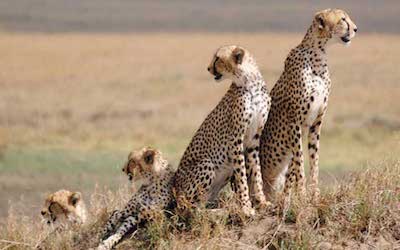
This medium Tanzania safari offers some amazing experiences including game viewing and bird watching in Tarangire National Park. Read more..
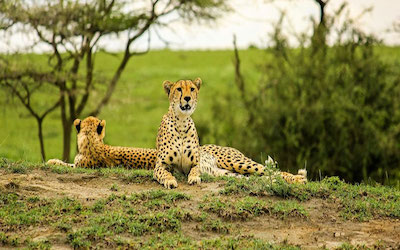
Visit Lake Manyara, Serengeti, Ngorongoro Crater and Tarangire National Parks in this breathtaking 7-day Tanzania safari. Read more..
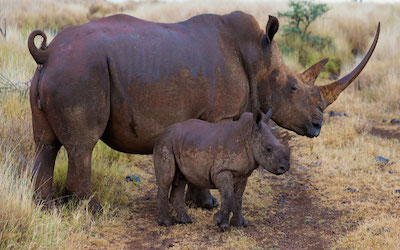
This safari explores the best of Nserengeti and Ngorongoro National parks rewarding you with views of the famous “big five” and many more. Read more..
Tanzania Safaris for Kilimanjaro Climbing
7 Days Kilimanjaro Safari (Marangu Route)
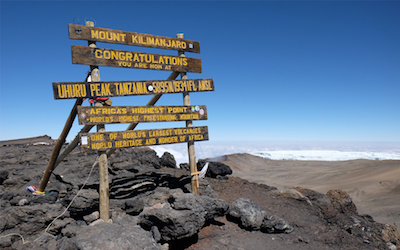
Explore Kilimanjaro through the most popular Marangu route (sometimes referred to as “Coca Cola” route) due to its ease in hiking. Read more..
8 Days Kilimanjaro Safari (Machame Route)
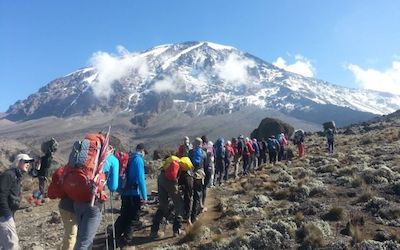
The Machame route is referred to as the “Whiskey ” route due to the difficulty in hiking it though this only serves as an extra motivation to the brave hikers. Read more..
8 Days Kilimanjaro hike (Lemosho Route)
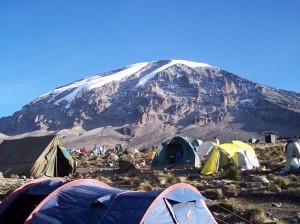
The Lemosho is a less competitive route located on the quieter western side of Kilimanjaro. Read more..
6 Days Kilimanjaro hike (Rongai Route)
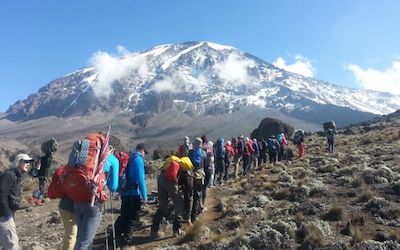
The Rongai route approaches Kilimanjaro from the northern direction at the Kenyan border. Read more..
More about Tanzania
Topography
Tanzania’s general topography is comprised of a fertile coastal belt, the Masai Steppe and mountain ranges to the north (with Mt Kilimanjaro rising to 5,895 metres); and a high plateau in the central and southern regions. There is over 61,000 sq. km of inland water. Unguja Island (36 km from the mainland) is fertile, hilly and densely populated on the west side, low and thinly peopled in the east.
Climate
The climate of Tanzania varies with geographical zones: tropical on the coast, where it is hot and humid (rainy season March-May); semi- temperate in the mountains (with the short rains in November-December and the long rains in February-May); and drier in the plateau region with considerable seasonal variations in temperature.
Vegetation
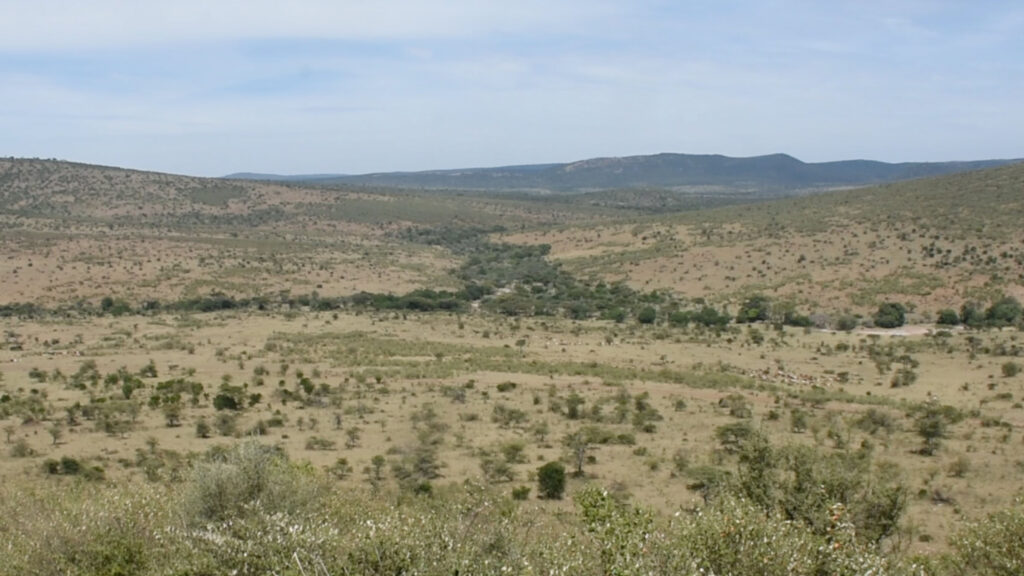
Lush-tropical at the coast; the rest of the country, apart from urban areas, is savannah and bush. Forest and woodland cover 37% of the land area, having declined at 1.1% p.a. between 1990 and 2010. Arable land comprises 16% while permanent cropland 2% of the total land area.
Wildlife
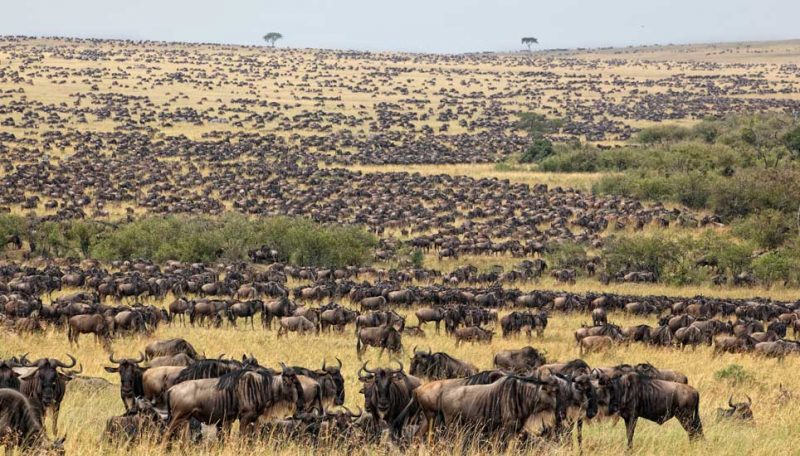
The national parks and game reserves cover 16% of the country and include Serengeti National Park (famous for its vast migratory herds of plain animals, notably wildebeest, zebras, elands and kudus). Small bands of chimpanzees are found in the Gombe National Park along Lake Tanganyika. The steep mountain walls of Ngorogoro Park’s volcanic crater have provided protection and a natural enclosure for animals in an environment of great natural beauty.
Kilimanjaro National Park
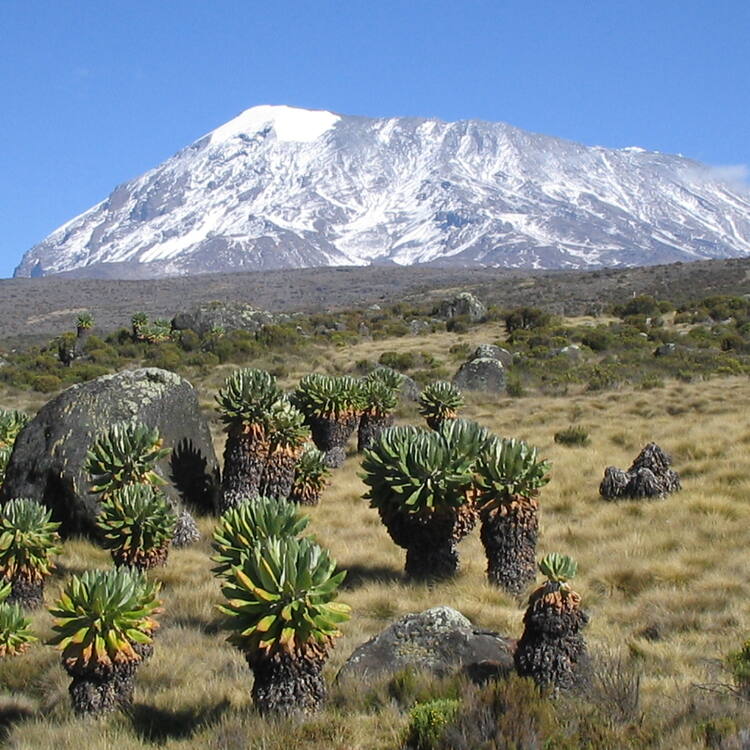
Kilimanjaro National Park is located along the northern border with Kenya. It covers an area of 652 square miles (1,688 sq. km) which includes the montane forest that surrounds Mount Kilimanjaro. Mount Kilimanjaro is one of the 7 Natural Wonders of Africa and a UNESCO World Heritage site.
Kilimanjaro National Park is home to Mount Kilimanjaro which is the tallest mountain in Africa and the tallest free-standing mountain in the world. It reaches a maximum height of 19,341 feet (5,895 m) at Uhuru Peak. Uhuru peak is part of the Kibo cone, which is one of three volcanic cones found on the mountain. Read more..
Ngorongoro Crater
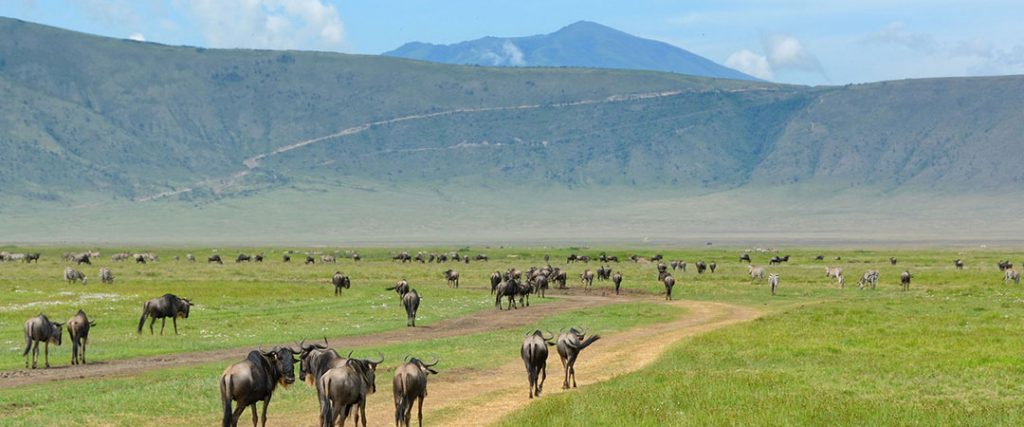
The Ngorongoro Conservation Area (809,440 ha) spans vast expanses of highland plains, savanna woodlands and forests, from the plains of the Serengeti National Park in the north-west, to the eastern arm of the Great Rift Valley. The area was established in 1959 as a multiple land use area, with wildlife coexisting with semi-nomadic Masai pastoralists practicing traditional livestock grazing.
It includes the spectacular Ngorongoro Crater, the world’s largest caldera, and Olduvai Gorge, a 14km long deep ravine. The property has global importance for biodiversity conservation in view of the presence of globally threatened species such as the black Rhino, the density of wildlife inhabiting the Ngorongoro Crater and surrounding areas throughout the year, and the annual migration of wildebeest, zebra, Thompson’s and Grant’s gazelles and other ungulates into the northern plains. Read more..
Tarangire National Park
Tarangire National park is one of the largest Parks in Tanzania, occupying 2600 Sq. km. It is known to have a wide variety of wildlife species with amazing accommodation facilities. The park is located is located via a short drive from Arusha, and it’s also found in close proximity to some destinations such as Lake Manyara National Park. Its name derived from River Tarangire which crosses through the park. Different wildlife species drink from the river which is a primary source of water for the animals especially during the dry season. Read more..
Lake Natron
A soda lake at the base of the active Ol Donyo Lengai volcano, the area around Lake Natron is often described as having a desolate and almost lunar beauty. Lake Natron is found in the northern part of Tanzania. Near the Tanzania-Kenya boarder. It is the most important breeding site for Lesser Flamingos in the world.
Lake Manyara National Park
Lake Manyara is worth visiting for those intending to explore the East African rift valley landscape and a plethora of wildlife including tree-climbing lions, elephants, giraffes, zebras, wildebeests, buffaloes, and over 390 species of birds including lesser flamingos. The protected area was established in 1960, designated a UNESCO Man and Biosphere Reserve in 1978 and an Important Bird Area (IBA) in 2009. According to UNESCO, a Biosphere reserve is a ‘Learning Place for Sustainable Development’ and the status has helped to position Lake Manyara for responsible tourism. The Manyara Ranch Conservancy is one of the projects that contributes to conservation of the natural and cultural heritage of the adjacent local communities including the Maasai. Read more..


